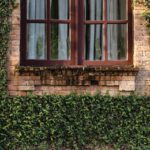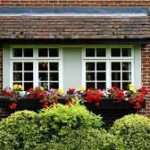No plants near the house, ever!
Some people fix up fixer-uppers and other people create them.
If you allow plants to grow along your exterior walls, you are fixer-upper-creators.
A common practice that can create costly damage to your house exterior is to allow plants to grow along your walls. Your walls need sunlight to dry out after a rain. Roots grow into siding and foundations. Either of both of these things cause rot, air leaks, water leaks, and sometimes a need to structurally rebuild a wall.
 The worst culprit in New England is English Ivy. It is an invasive plant. It grows its roots into the walls of a building. Our typical wood-framed houses don’t have a chance against it. Even the Ivy League has hacked down the stuff. Harvard did it in 1982, because it was destroying their brick buildings.
The worst culprit in New England is English Ivy. It is an invasive plant. It grows its roots into the walls of a building. Our typical wood-framed houses don’t have a chance against it. Even the Ivy League has hacked down the stuff. Harvard did it in 1982, because it was destroying their brick buildings.
When I answered a question about Hardboard, I included this advice:
3) Keep nature away from hardboard siding: Hardboard siding must be installed at a distance of at least 6 inches from the ground, grass, mulch, and plants. Do not allow vines or creepers to twine around your hardboard siding.
 The problem is not only ivy and vines. Climbing roses, bushes, small tress, and other plants should be at least 5 feet away. Home inspectors that we work with regularly recommend cutting down evergreen bushes that were once popular in front flowerbeds. Many remain, in an overgrown state, holding moisture, blocking light, and otherwise doing harm in the name of being pretty.
The problem is not only ivy and vines. Climbing roses, bushes, small tress, and other plants should be at least 5 feet away. Home inspectors that we work with regularly recommend cutting down evergreen bushes that were once popular in front flowerbeds. Many remain, in an overgrown state, holding moisture, blocking light, and otherwise doing harm in the name of being pretty.
Plants should be strategically placed on your property to supply shade to help cooling in the summer and evergreens can block winds in the winter. But, these plants should be a sufficient distance from the house so that, even when they grow, they will not get close.